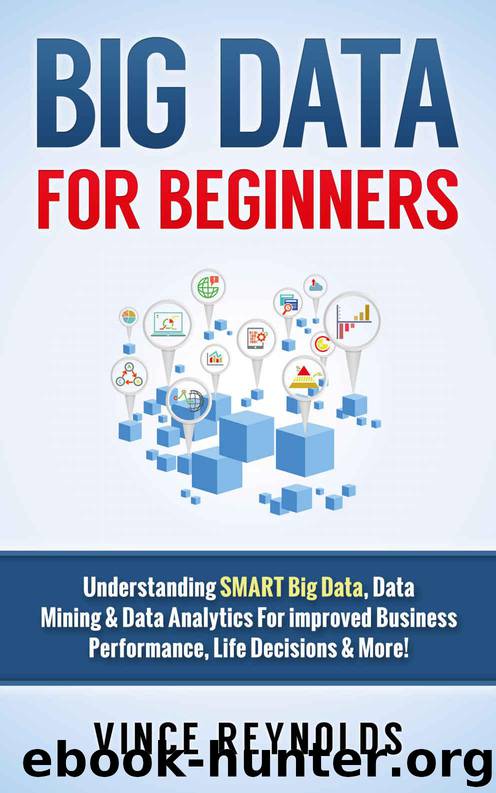Big Data For Beginners: Understanding SMART Big Data, Data Mining & Data Analytics For improved Business Performance, Life Decisions & More! (Data Analytics, ... Computer Programming, Growth Hacking, ITIL) by Reynolds Vince

Author:Reynolds, Vince [Reynolds, Vince]
Language: eng
Format: azw3
Published: 2016-02-26T16:00:00+00:00
Chapter 3: Big Data Analytics
Let’s imagine that we are still in 2007, and we are working as part of an executive team for an online search company. Apple just introduced the iPhone. With the new device, there is a concern if the company has to develop a separate experience for those who will use the iPhone. Of course, there’s no way to predict the future, and probably the iPhone is just a fad. Is the iPhone the next big thing?
Suppose you have tons of data that you can use. However, there is no way for you to query the data and find the answer to an important figure: the number of users accessing the search engine through the iPhone.
In 2007, there is no way to ask this question without increasing the schema in your data warehouse. It is also an expensive process, which may take weeks and even months. The only way is to wait and wish that your competitors are not several steps ahead of you.
This example shows the difference between real-time big data analytics and conventional analytics. In the past, it is crucial to know the types of questions you want to ask before you can store the data.
Today, technologies such as Hadoop provide you the flexibility and the scale to store data, before you know how you can process it. Certain technologies such as Impala, Hive, and MapReduce will allow you to process queries without transforming the supporting data structures.
At present, you are much less likely to encounter a scenario in which you can’t query data and receive a response in a short span of time. Analytical processes which used to require months to complete have been reduced to mere hours.
However, shorter processing times have resulted to higher expectations. Just a few years ago, most data scientists believe that if it takes you less than 40 minutes to get results from a query, that is no miracle. Now, there are expectations for the speed of thought as in you are thinking of a query, the engine will instantly provide a result, and then you start the experiment.
These days, the target is all now about computing with faster speed processing questions that are unknown, defining new ideas, and decreasing the time between when the event is happening in a certain point of the globe, and someone being able to react or respond to the event practically instantly.
A fast rising world of newer technologies has significantly lowered the cycle time of data processing, which makes it easy to experiment and explore with data in new ways, which are not heard of just two to three years ago.
In spite of the availability of new systems and tools for managing Big Data at ultra-speeds, however, the real promise of advanced data analytics also encompass the realm of pure technology.
Real-time Big Data is not only a process for storing petabytes of data in a data reservoir. This is also about the capacity to make informed decisions and take the right actions at the best time.
Download
This site does not store any files on its server. We only index and link to content provided by other sites. Please contact the content providers to delete copyright contents if any and email us, we'll remove relevant links or contents immediately.
Deep Learning with Python by François Chollet(15032)
The Mikado Method by Ola Ellnestam Daniel Brolund(12292)
Hello! Python by Anthony Briggs(12183)
OCA Java SE 8 Programmer I Certification Guide by Mala Gupta(11550)
Dependency Injection in .NET by Mark Seemann(11336)
A Developer's Guide to Building Resilient Cloud Applications with Azure by Hamida Rebai Trabelsi(10530)
Algorithms of the Intelligent Web by Haralambos Marmanis;Dmitry Babenko(10150)
The Well-Grounded Java Developer by Benjamin J. Evans Martijn Verburg(9811)
Grails in Action by Glen Smith Peter Ledbrook(9480)
Secrets of the JavaScript Ninja by John Resig Bear Bibeault(9045)
Hit Refresh by Satya Nadella(9040)
Sass and Compass in Action by Wynn Netherland Nathan Weizenbaum Chris Eppstein Brandon Mathis(9032)
The Kubernetes Operator Framework Book by Michael Dame(8474)
Test-Driven iOS Development with Swift 4 by Dominik Hauser(8437)
Exploring Deepfakes by Bryan Lyon and Matt Tora(8299)
Robo-Advisor with Python by Aki Ranin(8252)
Practical Computer Architecture with Python and ARM by Alan Clements(8225)
Implementing Enterprise Observability for Success by Manisha Agrawal and Karun Krishnannair(8195)
Building Low Latency Applications with C++ by Sourav Ghosh(8101)
